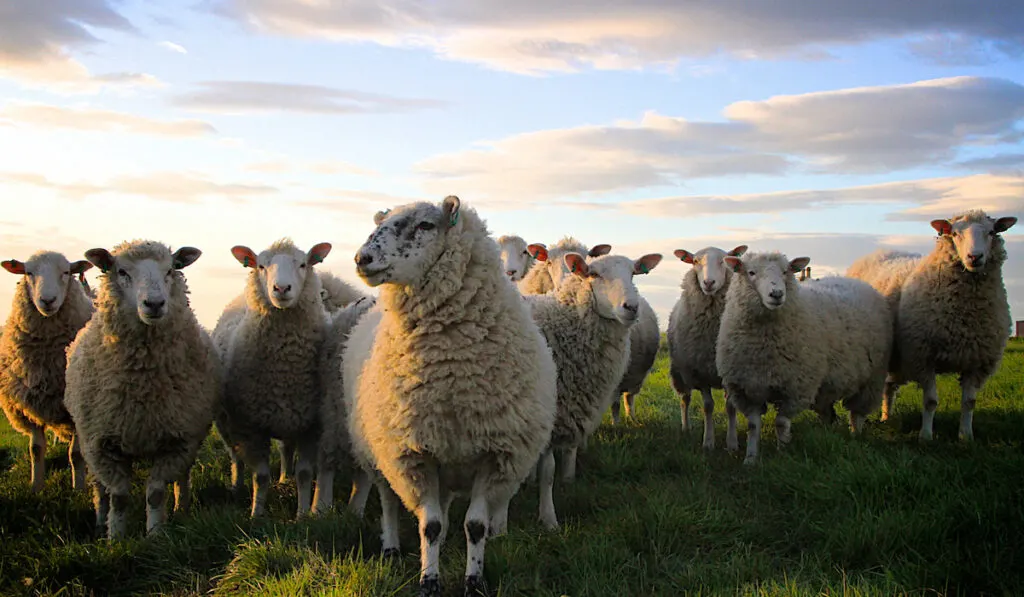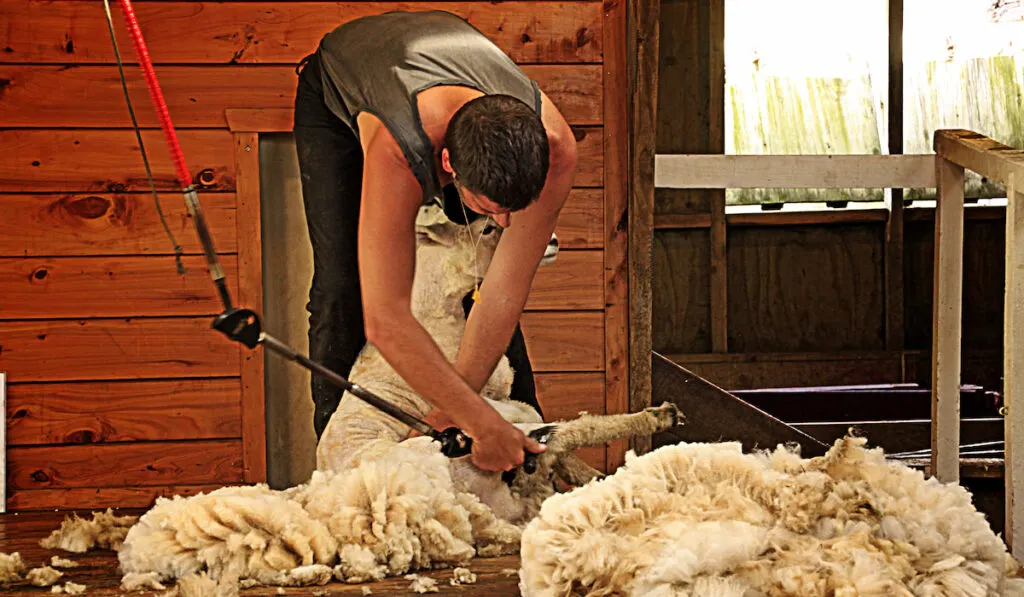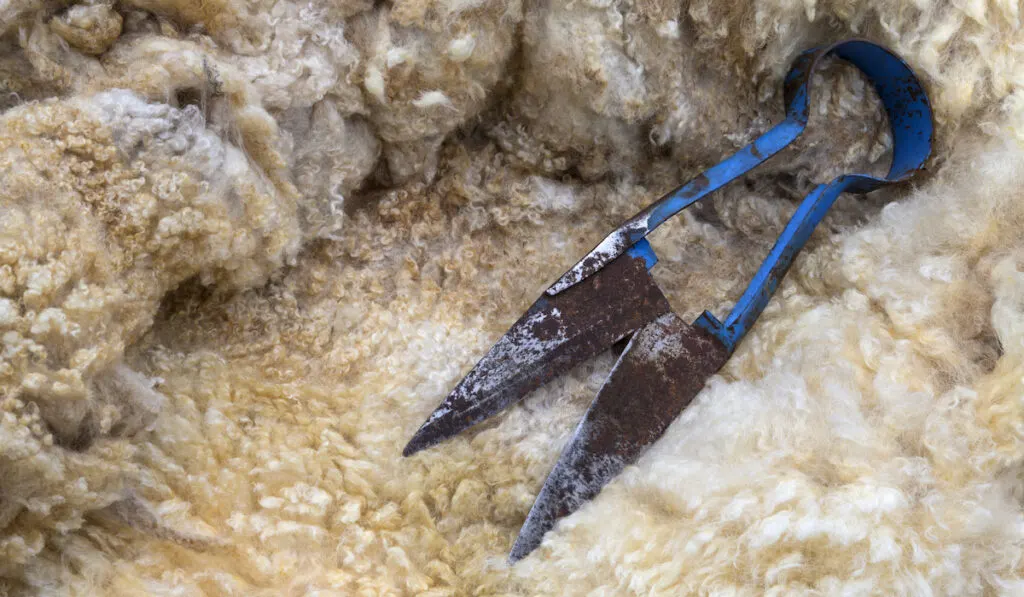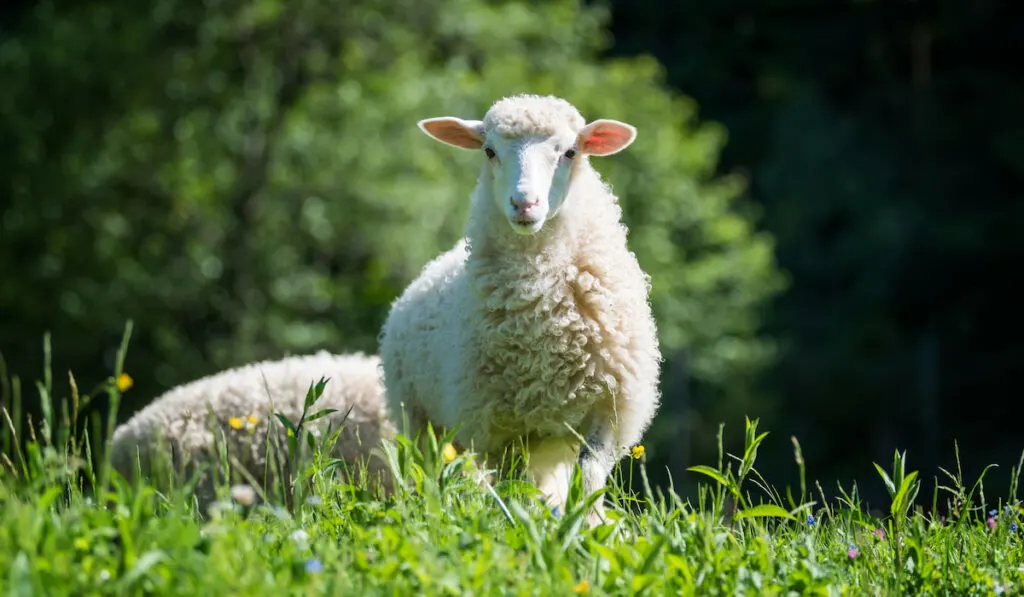You might not know that sheep have wool coats that continuously grow throughout the year. These coats are sheared, or shaved off, at regular intervals. The wool is then sold, processed, and turned into clothing, accessories, and bedding. Many people assume that a sheep’s wool coat is sheared only for financial reasons, but that is not the full story.
Sheep need to be sheared to keep them healthy and allow them to live comfortably through the changing seasons. The ability to shed naturally has been bred out of most breeds of sheep which makes shearing an absolute necessity.

Yes, it is true that their wool is sold to make money, but that money helps to feed the sheep, keep them happy, and provide some of the money needed to have the sheep sheared regularly.
Many animal advocates reject the idea that sheep must be sheared multiple times throughout the year. They compare the shearing practice to an act of torture.
However, sheep do need to be sheared regularly and shearing is not anything close to torturous. Shearing is vital for the health and comfort of sheep.

Table of Contents
What does ‘shearing a sheep’ mean?
Shearing a sheep means that a person, often referred to as a shearer, uses a tool that safely removes the wool coat off the sheep.
First, the sheep are brought to a special shearing shed or other predetermined area on a farm that is safe for the shearing process. A trained shearer completes the shearing process with either blade shears or machine shears.
Blade shears are like large scissors and they allow the shearer to leave some wool on the sheep. These are best for colder climates when the sheep need to keep some of their wool for warmth. Machine shears are more like dog or beard clippers and perform a closer trim.
Regardless of the tool, the sheep are usually cradled on their backs and the process only takes minutes. They are not physically injured during the process and they are up and back to their normal lives immediately after the shearing is complete. (source)
Accidents can occur, but they are rare and most shearers do their best to avoid injuries.

Why do sheep need to be sheared?
Domesticated sheep need to be sheared because their wool coats grow so quickly and so thickly that they can cause problems for the sheep if they are not sheared off regularly.
A sheep’s coat can become so thick that it can cause the sheep to hold in too much heat. In the summer months, sheep with thick wool coats will be unable to regulate their temperature and they can easily overheat.
This is a serious concern and overheating can be fatal for sheep.
Mites, maggots and other pests can wreak havoc on a sheep’s skin, especially if there is a thick coat of wool keeping injuries and infestations hidden.
Shearing sheep regularly allows veterinarians and sheep owners the chance to spot any skin or body issues that are not visible when the animal is covered in wool. (source)
What happens if you do not shear a sheep?
If a domesticated sheep is not sheared regularly, they will begin to experience various health issues. They may not be able to maintain their weight as well as sheep that are sheared more often. Weight loss may not be noticed until it is too late because of the thick wool coats.
Failing to shear a sheep and letting their wool grow uncontrolled can cause matting or tangling. This can constrict blood flow in their limbs, cause painful sores, and prevent the sheep from moving properly.
A lack of shearing can also cause blindness if the excessive wool grows over their eyes.
Lambs also benefit from having a mother who is regularly sheared so that they can nurse easily. An overgrowth of wool can grow around and over a mother’s teats, preventing the lambs from nursing. A lamb that is unable to nurse effectively can die very quickly if the situation is not remedied immediately. (source)
Is shearing sheep cruel or painful?
Many animal rights advocates believe that shearing a sheep is a cruel and harmful practice that should be stopped. They claim that the sheep are held down, stressed, injured, and mutilated in an effort to remove their wool as quickly as possible.
Most sheep owners will attest that this is far from the truth of the matter.
Shearing is a necessary, healthy practice that veterinarians fully support and recommend to all sheep owners.
The actual shearing process is not painful for the sheep; it is the equivalent of shaving and grooming a dog. It is humane and safe for the sheep if it is done properly by an experienced shearer. (source)
How often are sheep sheared?
Sheep are typically sheared during each season. A domesticated sheep’s coat will grow continuously and rather quickly, so shearing is necessary multiple times throughout the year.
Different considerations are taken for pregnant sheep. Their shearing may take place at different times depending on when they are due to lamb. (source)

Do all sheep need to be sheared?
While the majority of domesticated sheep do need to be sheared, there are a few breeds of domesticated sheep that do not need to be sheared. Wild breeds also do not need to be sheared.
Wild sheep and some domesticated breeds have coats that do not grow continuously. Instead, these sheep have coats of hair or wool that sheds during certain seasons.
Sheep like the Romanov, the Blackhead Persian, West African Dwarf, the St. Croix, and the Maasai sheep do not have to be sheared.
When sheep were all wild, they naturally shed their coats so they did not become overgrown. Once they were domesticated, today’s breeds were developed to produce wool for clothing and materials.
Over many centuries, most domesticated sheep became dependent on their human owners to keep their coats trimmed and maintained properly. (source)
Are there really sheep shearing contests?
As strange as it may seems, there really are sheep shearing contests and they are very popular in sheep farming communities. They are most popular in the main sheep farming countries of New Zealand, Australia, the United Kingdom, Ireland, and South Africa.
In New Zealand, there is a huge shearing contest called the Golden Shears. It is considered the most renowned shearing contest in the world and it has even been called “the Wimbledon of shearing.” (source)
Can the shearing process be improved?
There have been documented occasions where sheep were mistreated and even harmed during the shearing process. Unfortunately, untrained shearers and a lack of concern for the animal can lead to accidents.
Thankfully, most farms place a strong emphasis on the safety and care of their animals.
One aspect that of the shearing world that can be improved is possibly requiring a license or more extensive training for shearers.
Currently, there are no regulations on who can shear a sheep. More training and even licensure can help better train new shearers and prevent stress or injuries to the sheep. (source)
Final Thoughts
Although you may have heard otherwise, sheep shearing is a safe and necessary aspect of owning sheep. Shearing is not a process to be feared or fought against. Instead it should be embraced and improved upon. Domesticated sheep will always need to be sheared multiple times throughout the year to keep them happy and healthy.

john
Monday 17th of October 2022
Is the shearing of domestic sheep mandatory in UK